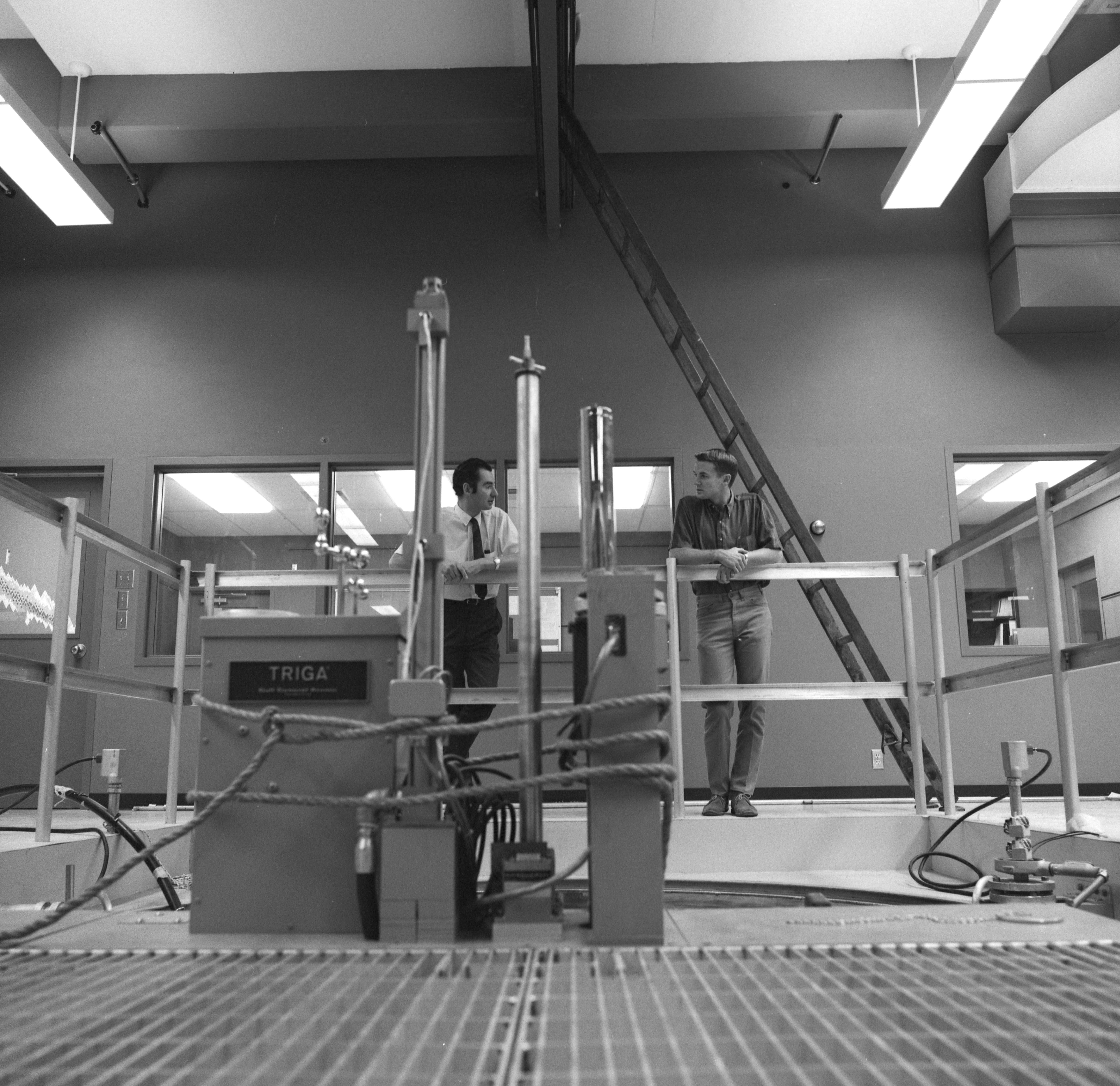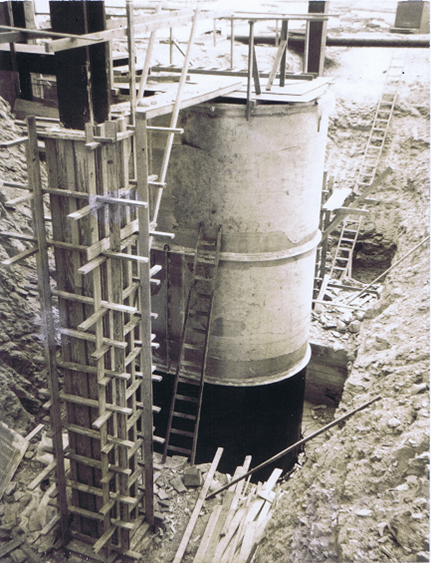

The UCI Nuclear Reactor is owned and operated by the Department of Chemistry for use in radiochemical applications that pertain to spent nuclear fuel, delayed neutron classifications of uranium and plutonium, medical isotopes, and classification of branching decay ratio for specific isotopes. The reactor is a Mark I TRIGA (Training, Research, Isotopes General Atomics) that runs at a steady-state power level of 250 kilowatts. This reactor also has the capability to pulse up to 1000 megawatts due to the inherently safe nature of the fuel used in TRIGA reactors. It is comprised of up to 20% enriched Uranium that is mixed with Zirconium-Hydride, which allows for safe operation of the reactor. As the temperature increases from the fission process, the fuel elements heat up and become less efficient at creating more fission events effectively reducing the reactivity.
The reactor first became critical in November of 1969 under the direction of Nobel laureate Dr. F. Sherwood Rowland and Reactor Supervisor Dr. George Miller. Currently, the facility has eleven licensed reactor operators in the departments of Chemistry, Chemical Engineering, and Material Science. The reactor is frequented by UCI Campus Tours, where students and organizations of all ages learn about the science behind fission and how it is used in scientific research. Several educational courses offered by UCI utilize the reactor throughout the year, including Radioisotope Techniques, Nuclear and Radiochemistry, and Reactor Fuel Cycles. During the summer, there is also a two week course in which students from around the world are invited to learn reactor fundamentals in preparation for gaining a Reactor Operator’s License from the Nuclear Regulatory Commission.
A plethora of other systems are maintained in the nuclear reactor facility for use by scientific researchers. On such item is a gamma irradiator with approximately 4,500 Ci of Cesium-137 along with an irradiation chamber for radiation exposure studies. Also available at the facility are gamma-ray spectrometers consisting of three variations of HPGe detectors, four Sodium Iodide detectors, a Lanthanum Beryllium detector, and two Compton Suppression systems (one with a Sodium Iodine annulus and another with a Bismuth Germanate annulus) are available. A low background counting room constructed from steel cast prior to any nuclear weapons testing is used for detection of trace isotopic composition analysis. The facility also has proportional beta counters, a liquid scintillation counter, an alpha spectrometer, and neutron detection equipment to round out its radiation detection capabilities. Future projects for the facility include: construction of a 100% efficient beta detector, a 200 sample holder xyz gantry automated sample apparatus that has the capability to store and count samples, a second sample changer low background counting room, upgrades to stack monitoring capabilities system for detection of effluent release, creation of an Instrumentation course offered by UCI, and digitization of reactor console instrumentation.